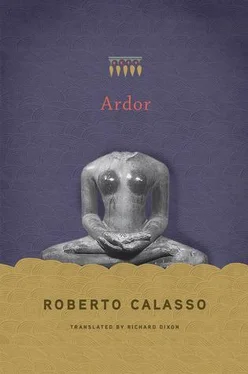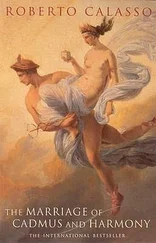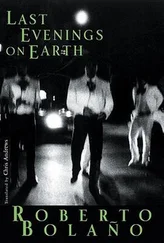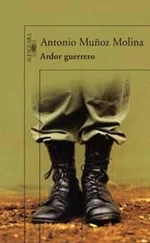In 1933, exactly thirty years after their essay on the primitive forms of classification, and now free from Durkheim’s guidance, Mauss went back to express his own view on correspondences (the realm of analogy). And he did so in one of those marginal and preliminary writings of his where he often expressed his most radical thoughts. Intervening in a session where Granet had delivered his enlightening study “La Droite et la gauche en Chine,” Mauss used the occasion to make an undisguised and blatant retraction. He said: “Wrongly we have been too ritological and too worried about practices.” This had originally been Durkheim’s error, since the practices (basically: the rites) offered secure ground, insofar as they were established and rooted in society, whereas all the rest (especially myth) could also disappear among the mists of beliefs and folk tales. But now, Mauss added, the scene was changing: “The progress made by Granet consists of introducing some mythology and some ‘representation’ into all this.” Continuing in this vein, Mauss arrived at other surprising conclusions, which could be glimpsed between the lines. First of all by firmly shifting the sphere of research in the Durkheim school, to which he had never denied belonging: “The great effort we have made on the side of ritology is unbalanced because we have not made a corresponding effort in mythology.” Here Mauss introduced a word ( ritology ) that has become particularly valuable today, and he attacked the very bases of the anthropological work that he and his colleagues had carried out in Paris over the previous thirty years. And that criticism could just as well have been applied to English anthropology over the same period. Thus he gave advance warning of what years later would be referred to as a change of paradigm. And, as a last coup de théâtre, to represent it he named someone who had never apparently questioned the school’s precepts — Marcel Granet. Mauss now wished to make him into something highly suspect: a mythologist. Mauss wrote: “But we have one mythologist left, and this is Granet.” The reference, though unstated, was to the masterpiece that Granet had published seven years earlier: Danses et légendes de la Chine ancienne , an unsurpassed example of how mythology can be put into practice.
Mauss was concerned about something else in these impromptu comments. That was correspondences. This vast subspecies of classifications has acted in a whole variety of ways in giving meaning to the world, from the very earliest times up to the plates of signaturae in Athanasius Kircher and Robert Fludd, at the height of the seventeenth century, which is to say up until very recent times. “These ways of thinking and at the same time of acting are, besides, common to a very large mass of humanity,” wrote Mauss — introducing another extremely important phrase (what do the whole of the Brāhmaṇas speak of if not of “ways of thinking and at the same time of acting”?). But how to unravel the immense tangle that had been formed well before all documented history? Here Mauss intervened with his mythopoetic power — and deliberately referred to the fact that, for him, the key did exist: it was a small jade plaque, gray or dark green in color, that the Maoris call hei tiki , and that their noblewomen wear around their necks as a talisman. Tiki was also their name for the Progenitor of the human race, their Prajāpati. What do these enchanting small objects represent? “They depict a fetus — highly stylized—, the most beautiful ones with a red stone eye.” But not only that: “These tikis also represent the phallus, the first men, the act of creation; these tikis are above all depictions of the macrocosm and of the microcosm, of God.”
Each time that Mauss has occasion to speak about these jade plaques we can feel his mind vibrating, as if he were holding the very first cell of correspondences, condensed into these tiny, untarnishable objects, which Western invaders had simply taken for ornaments and resold as exotic trinkets.
Mauss had come across an illustration of Tiki while working with Hertz at the British Museum one day, in a plate attached to the first volume of John White’s Ancient History of the Maori , with the list of correspondences connected to individual parts of its body: “We copied carefully: Tiki … was a little man with a tuft of hair, naked, his virile member modestly hidden. Inserted immediately into their place are the names of the gods to his right and to his left, the god of war and the god of peace. Also, the gods of intelligence, of dreams and of the sky that are on his head, the gods of feet and of magic … etc. This we found immensely interesting.”
But the story doesn’t end here. Years later, Mauss presents a paper on Tiki at a conference on anthropology and he decides to go back to the British Museum, he says, “to have another look at the text I had cited. Then, to my great amazement, thirty years later, I found myself in front of something that went far beyond what I had noted down. I had before me an enormous folded plate, which had been drawn by experts and summarized the sayings of the high priests of New Zealand, for White, in obedience to Grey and White’s instructions. They are documents dating back to the years 1859–1886. Consequently, they are completely beyond all contamination on the part of professional ethnography, ethnology and all the sociologies you care to imagine [it is impossible not to express a note of admiration and delight for that “all the sociologies you care to imagine”]. Around all the limbs of Tiki, and all the body parts of Tiki, on this large folded illustration, is set out the complete classification of the world, that of times and spaces and of all the species of things with the gods that rule over them. It is therefore the picture of the microcosm, together with the complete development of the macrocosm, and I am not the one who has made it! There is no possible doubt, it is much clearer than all the texts of the great theorists of divination, of Antiquity and of the Renaissance. With these words, I deliver this fact to the materials of René Berthelot. The Maori priests have outlined the macrocosm and the microcosm.” This scene of recognition, in which first Mauss and Hertz, then Mauss alone, bent over the plate of a book, come across the subject matter that was to occupy their most intimate and constant thoughts, was recounted by Mauss in 1937, during a discussion that followed Paul Mus’s lecture “La Mythologie primitive et la pensée de l’Inde” at the Société Française de Philosophie. On that occasion, Mauss did not say so explicitly, but seemed to suggest that Prajāpati, the Puruṣa, the lone figure that dominated the scene of the Brāhmaṇas, might have a counterpart farther east in New Zealand, in those jade pendants that Maori noblewomen wore against their skin, while the Vedic Prajāpati had left no tangible image of himself. Everything, in India, began and ended with fire.
The underlying significance of the tiki had been more fully stated four years earlier, in response to Granet’s lecture (the occasion remains important, establishing the link between Mauss and a particular scholar). Mauss had stated in clearest detail what was implied in the question of the tiki , and where — very far indeed — it might lead. The tiki , wrote Mauss, “is literally the world picture, a sort of barbarian version of one of the fundamental notions of East and West, that of macrocosm and microcosm in a human figure. Because, as in our ancient systems of signaturae , the limbs of the tiki and of man ‘correspond’ to beings, things, events and parts of the world. Everything is divided between ‘powers and natures’ not only to left and right, but also above and below, to front and back, in correlation with a center.” We can still feel, in those lines, the excitement of someone convinced he has finally found — and, we might say, actually touched — the “barbarian version” of an immense, multifaceted text of thought. Indeed, not only of thought, but of all experience. He says here, in a few words, that in East and West — and therefore with no geographical limitation and in spite of all the sacred principles of anthropology — a certain way of thinking had guided “a very large mass of humanity.”
Читать дальше












